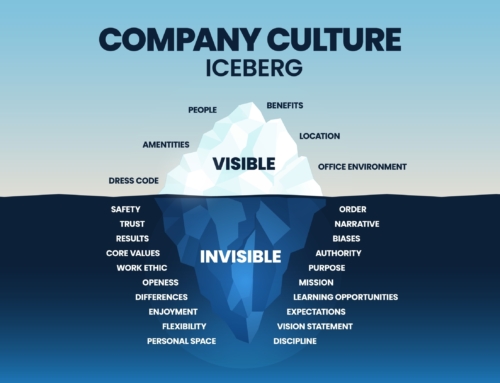The network revolution is here! No ifs, no buts, no choice.
If you’re in HR, you are going to be impacted, BIG TIME.
How?
- 70% of roles currently done by your workforce won’t exist in 5 to 10 years’ time.
- 70% of your workforce will be doing jobs in 5 to 10 years’ time that do not exist now.
- Businesses will be looking for help in the network revolution to support a massive transformation in “thinking and doing” in the people space.
- The HR Practitioners role will be completely different.
Why? What’s happening?
Let’s walk through 4 key areas where technology is having a huge impact on businesses.
- Virtualisation
- Software Automation
- Internet of things and robotics
- Emerging Management Models
Virtualisation: Turning hardware into software.
Ten to fifteen years ago, when you needed a new file server or email server, the IT manager would buy a new machine, install it and configure it. In the last 5 to 10 years, virtual machines have become commonplace – this is where you still have a physical server but install specialised software that can partition a physical device into many virtual devices.
For the non-IT person, think of it as partitioning a large warehouse into multiple apartments, each with its own address and key. A virtualised server is the same concept, but instead of brick walls we use software to create the partitions. Now instead of buying an apartment, let’s think about leasing the same amount of space anywhere in the world – particularly where the land might be cheap and building costs are low. This is the equivalent to cloud computing. Your virtual server is somewhere in the world, but as a user, all you care about is that you can access your files, your emails, business systems, etc.
All very interesting, but so what? Well, the IMPACT on jobs is that the skills required to operate a computer room or data centre can now be exported to anywhere in the world. The GovNext project which aims to move government computing to the cloud, will be interesting to watch as it is likely to cause a significant shift in the types of skills required in the future. This year alone, IBM will release 72,000 people with the wrong skills and hire 72,000 people with the right skills. So, if you are involved in technology or have technology as a major component of your business, that is about to be turned on its head. And if you don’t turn it on its head, you will be out of business, it’s not a choice.
Software Automation:
This is a broad term that can include many things, but anything that required programmers, development or systems will be impacted. Computers will write programs, software companies will be dictating what that software looks like, anything other than ‘off the shelf’ won’t be worthwhile from a cost and time perspective, business will be adapting to align with technology, not the other way around. One technology that illustrates the concept is web development. Ten years ago, developing a commercial website was still the domain of experienced programmers. Nowadays, technologies like WordPress make it easy for anyone with a little creative flair to put together a professional-looking site with advanced features like blogging, on-line stores, etc. in a relatively short space of time. The IMPACT on jobs is that a lot of the technical work has been automated, although the creative elements still rely on the human eye to decide what looks appealing and what doesn’t. IT is a massive industry, and these changes will have a significant effect on the workforce and the work they do.
Internet of Things and Robotics:
When people talk about robots one of the first images that springs to mind are humanoid robots (think of 3CPO in Star Wars or the challenges that Will Smith had in the movie “I, Robot”). While there is no doubt that one day in the distant future our children or grandchildren may be dealing with humanoid robots, many businesses have already been transformed by manufacturing robots. That technology is now available in a range of industries including mining, agriculture, construction, medical, retail the list goes on. Amazon will shortly open a grocery store where there are no checkout counters, instead you pick up what you want and as you leave the store it automatically deducts that amount from your account (there are 3.5 million people working checkouts in the USA). By deploying robotics technology, a business that was not previously considered viable, now is, due to robots. This technology is here, it is real, and it is tried and tested. The IMPACTS on jobs are many: new jobs are created that previously didn’t exist, the skills required are heavily skewed toward understanding the technology, managing the vendors of the devices and knowing how to deal with exceptions rather than managing a team of relatively low-skilled personnel.
Emerging Management Models:
The network revolution has fuelled the development of social networks (e.g., Facebook, LinkedIn, WhatsApp, Snapchat, WeChat etc.), collaboration software, new funding models (e.g. crowd-sourcing) and new organisation models like Holacracy, Wirearchy and the “agile” organisation. We have witnessed global companies like Deloitte and SAP abandoning a range of traditional management and performance management practices, declaring that they simply don’t work. Businesses are a social construct and yet when we put people in them, we expect to treat them like a machine or cybernetic system – i.e. we give them instructions, we pay them and in return we expect them to perform. The reality is that people are much more complex, and the complexity increases as more people interact with each other. Technology delivers more information, quicker and creates opportunities and choices that were not as visible a few short years ago. People want to do meaningful work that motivates and challenges them. To meet these demands companies must change a whole range of management and leadership practices, if they don’t they will lose their good to better organisations. The competition for scarce quality people resources will be the battle of the future. Every week your best people receive emails from different sources telling them about employment opportunities that match their skills. The challenge for leaders wishing to engage and retain their top talent is to think about how they need to evolve their own management thinking to make this happen.
An Anecdote:
Ten to fifteen years ago, it was fashionable to call the leader of the IT group the CIO – to convey the idea that this person was more aligned with the business than with technology: This saw the appointment of IT savvy business people into these roles.
The current trend is to appoint CTOs – Chief Technology Officers, who have a deep understanding of new technologies, the cloud, digital transformation, big data, etc. We have gone full circle, where the ideal leader of the IT group is now a business savvy IT person. Equally, while boards of directors in years past considered that at a minimum, they needed a lawyer and an accountant on the board, they are now starting to recognise that if they don’t have an IT specialist on the board, the company may fall victim to digital disruption.
In summary, digital disruption can take many forms:
- The elimination of existing jobs due to automation and the creation of new and different jobs and potentially in different locations.
- The creation of new business models that were not previously possible or viable without the technology.
- The emergence of new management models that rely more on collaboration and facilitation than on command and control.
As HR practitioners, we need to consider the first order impacts, but also look beyond to the second and third order consequences. For example, moving computing to the cloud may mean downsizing the computer centre, but also require the upskilling of resources to configure or maintain applications on the cloud, or to manage contracts with multiple vendors of platform as a service, software as a service.














Dr Susan Roberts says: